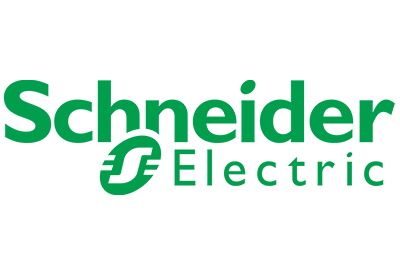#EVWeek in Canada Delivers Investments for Decarbonizing Transportation Across Canada

August 4, 2022
From coast to coast to coast, Canadians are actively contributing toward Canada’s fight against climate change in many ways. Given that transportation accounts for 25 percent of emissions, this contribution includes making the switch to pollution-free electrified transportation. Across the country, the Government of Canada is supporting Canadians by making it easier for families and businesses to purchase, charge and use electric vehicles (EVs) while driving toward a net-zero future.
During #EVWeek, from July 11 to 15, the Government of Canada announced new developments in charging infrastructure, battery manufacturing, purchase incentives and zero-emissions buses.
Deploying Charging Infrastructure
Thousands of new cars require thousands of new chargers, which are critical for enabling energy security and clean air. Since 2015, Canada has invested a historic $1 billion to make EVs more affordable and chargers more accessible. These investments are supporting the establishment of a nationwide network of chargers in where Canadians live, work and play, while federal rebates of up to $5,000 are helping more Canadians make the switch to an EV.
During #EVWeek alone, the Government of Canada announced the deployment of over 6,000 electric vehicle (EV) chargers across the country, supported by a total investment of over $45 million.
Representatives led 10 specific announcements across provinces and territories, totalling over $16 million to install nearly 2,000 EV chargers across the country while raising public awareness about zero-emission vehicles (ZEVs) and advancing green transportation initiatives.
#EVWeek investments include:
- $4.6 million to Hydro-Québec to help support the installation of up to 840 EV chargers across Quebec.
- $3.95 million to Shell Canada to install 79 EV chargers across 37 retail locations along critical corridors in Alberta, British Columbia, Manitoba, Ontario and Saskatchewan.
- $2 million to the Government of Prince Edward Island’s Ministry of the Environment, Energy and Climate Action to support the installation of up to 250 EV chargers on the island.
- $2 million to Manitoba Motor Dealers Association to install up to 300 EV chargers across Manitoba in public places, multi-family residences and workplaces and for light-duty vehicle fleets.
- $1.7 million to the BC Ministry of Transportation and Infrastructure and the City of Burnaby to install 128 EV chargers in Burnaby, and across British Columbia.
- $765,000 to Peak Power Inc. to install 117 EV grid-smartchargers across Ontario, across mixed-use developments.
- $560,000 to Eco-West Canada to install up to 100 EV chargers in Manitoba and Saskatchewan in public places, on-street, in multi-family buildings and workplaces or for light-duty vehicle fleets.
- $414,000 to the Government of Northwest Territories to help support the installation of up to 72 EV chargers across the Northwest Territories.
- $350,000 to the New Brunswick Power Corporation to install in workplaces 52 EV chargers across New Brunswick.
- $55,000 to Southwest Properties Limited to install 20 EV chargers in Halifax, Nova Scotia.
Federal representatives also participated in two milestone events with the Ivy Charging Network and takeCHARGE, representing a total investment of over $9 million to install 198 EV chargers in Ontario, and in Newfoundland and Labrador.
Supporting EV Development and Deployment
On July 13, Prime Minister Justin Trudeau joined Minister François-Philippe Champagne in announcing Umicore’s plans to invest $1.5 billion in Canada to establish an electric vehicle battery component production net-zero facility, in Loyalist Township, Ontario. This project will create a thousand jobs during construction and hundreds of long-term positions once the plant is up and running. Made-in-Canada battery materials are an essential part of ensuring North American energy and mineral security while creating jobs, supporting Canada’s auto and manufacturing sector, and keeping air clean.
In order to help businesses and communities make the switch to zero-emissions transportation, the Government of Canada announcedthe new iMHZEV Program. Medium- and heavy-duty vehicles contribute to nearly 10 percent of Canada’s emissions.The Government of Canada is providing nearly $550 million over four years to support eligible recipients in purchasing or leasing medium- and heavy-duty zero-emission vehicles (ZEVs). This program builds on the success of the Incentives for Zero-Emission Vehicles Program, which has already helped Canadians purchase or lease over 141,000 new light-duty zero-emission vehicles since 2019.
Budget 2022 invested in ZEV deployment, including by providing an additional $1.7 billion to extend the government’s purchase incentive program until March 2025 and to expand the types of vehicle models eligible under the program, which would include more vans, trucks and SUVs, in support of the government’s objective of adding 50,000 zero-emission vehicle (ZEV) chargers to Canada’s network.
Decarbonizing Transit and School Buses
Leading up to #EVWeek, the Government of Canada announced a 253,000 investment to support the transition to low-emission transit for the cities of Brampton and Burlington, in partnership with the Canadian Urban Transit Research and Innovation Consortium, through the Federation of Canadian Municipalities’ Green Municipal Fund. Earlier, funding was announced to support the electrification of public transit in St. Catharines and Thorold, Ontario — reducing greenhouse gas emissions by 95 percent while enhancing air quality. Projects such as these are helping to build stronger, healthier communities for everyone to call home.
As part of the transition to net-zero by 2050, Infrastructure Canada and the Canada Infrastructure Bank are supporting the decarbonization of public transit and school buses. The Government of Canada is on track to surpass the 2019 commitment supporting the procurement of over 5,000 zero-emissions buses, including nearly 4,000 school buses in B.C., Quebec and P.E.I. and over 1,200 public transit buses in 10 cities from coast to coast. These electric and hydrogen fuel-cell buses will be deployed on the road over approximately the next five years.
These investments are yet another step in reaching Canada’s target of ensuring that all new passenger vehicles sold in Canada are zero-emission by 2035. And just like investments in everything from clean technology to nature protection, the #EVWeek announcements are part of achieving Canada’s ambitious climate change goals to build a cleaner, healthier and affordable future for all Canadians.
Quick Facts
- Transportation accounts for 25 percent of total greenhouse gas emissions in Canada.
- Moving to zero-emission vehicles through regulations and investments is a significant part of Canada’s $9.1-billion Emissions Reduction Plan to meet Canada’s Paris Agreement target for 2030 and get on track for net-zero emissions by 2050.
- Investments in charging infrastructure made so far will result in more than 33,000 new chargers coast to coast and has been provided through the Electric Vehicle and Alternative Fuel Infrastructure Deployment Initiative and Zero-Emission Vehicle Infrastructure Program.
- To date, over 150,000 Canadians and Canadian businesses have taken advantage of the federal incentive to purchase a zero-emission vehicle.
- The Canada’s Infrastructure Bank will invest $500 million in large-scale ZEV charging and refuelling infrastructure that is revenue-generating and in the public interest.
- Applications are open for the Zero Emission Vehicle Awareness Initiative, until August 18, 2022.

















